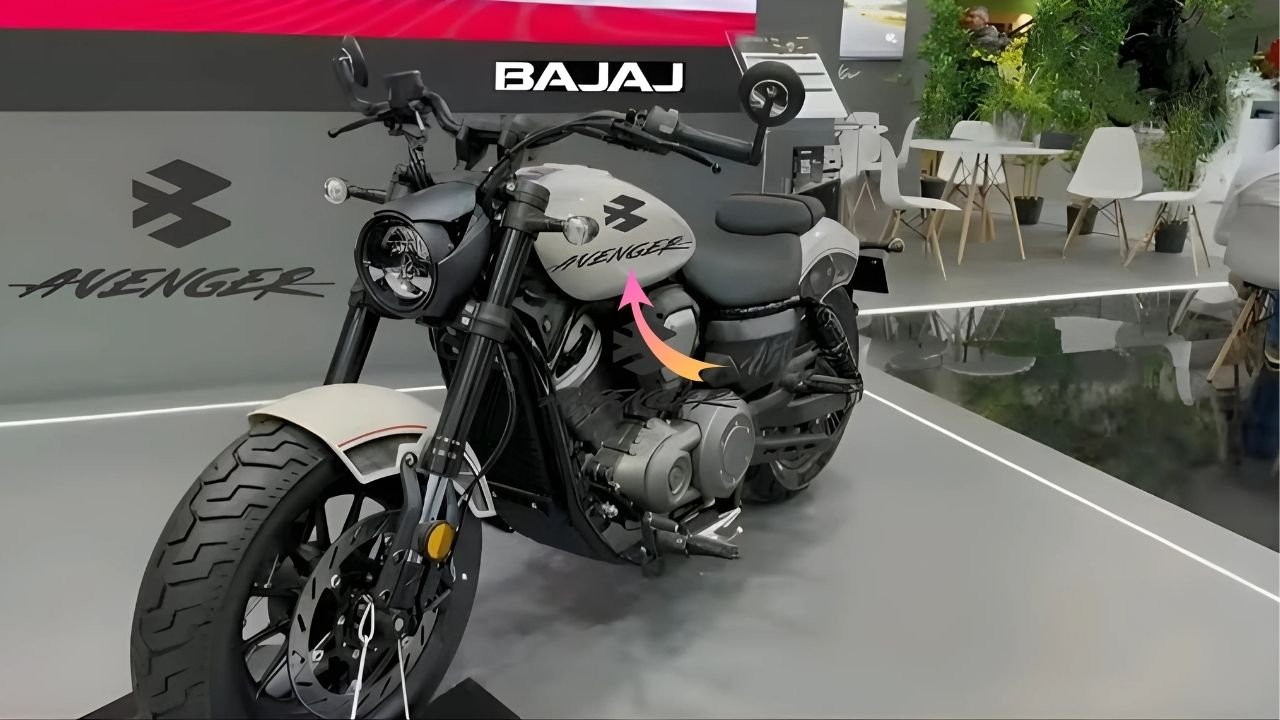Bajaj Auto is poised to disrupt the cruise motorcycle arena with the forthcoming Avenger 400, targeted for a 2025 debut. Renowned for delivering pragmatic yet accessible cruisers, the company appears ready to execute a decisive expansion, Premiering the Avenger nameplate. Nestled above the existing 220 iteration, the newcomer intends to win over the urban commuter while simultaneously courting the dedicated long-haul tourer.
The product retains the Avenger family’s characteristic low-slung silhouette, wide, relaxed-spread bars, and generously setback foot-pegs. To fend off the spectre of obsolescence, the aesthetic will incorporate contemporary enhancements, including LED illumination, re-styled alloy wheel layouts, a hybrid digital-analogue dashboard, and a range of fresh colour schemes. The resultant visual identity balances timeless boulevard flair with up-to-date sophistication, harmonising cushioned ergonomics and authoritative presence for riders unwilling to sacrifice elegance for comfort.
Bajaj Avenger 400 Powertrain and Dynamics
Powering the forthcoming Avenger 400 will be the familiar 373cc single-cylinder, derived from the Dominar 400, yet calibrated for the cruiser application. Bajaj’s engineering intent appears to center on linear torque availability rather than peak power, targeting a character suited to sustained, relaxed speeds. Anticipated figures hover around 39 PS and 35 Nm, promising a torque curve that eases overtakes and climbs while still behaving civilly in congested urban traffic.
Bajaj Avenger 400 Ride Quality and Technology
True to the Avenger lineage, attention to rider comfort has informed nearly every detail. A wide, generously padded low seat, a relaxed yet upright posture, and standard dual-channel ABS should collectively reduce fatigue on extended legs and bolster rider confidence. Preliminary reports hint at the inclusion of Bluetooth-enabled instrumentation and a basic navigation prompt, functionality that, if confirmed, will elevate the bike’s touring credentials to the next level in a competitive segment.
Bajaj Avenger 400 Predicted Pricing and Competitive Strategy
Bajaj’s knack for value-drive pricing has long reshaped market expectations, and the Avenger 400 appears set to continue that tradition. Expected ex-showroom pricing in the ₹2.2 to ₹2.5 lakh bracket will create a formidable proposition against Royal Enfield’s Meteor 350 and Honda’s H’ness CB350, while the combination of a larger-capacity engine, touring-oriented features, and the brand’s cost-effective engineering could redefine the mid-capacity cruiser sweet spot in the Indian market.
Bajaj Avenger 400 Implications for the Indian Cruiser Segment
While cruisers occupy a relatively narrow segment of the Indian two-wheeler landscape, consistent year-on-year expansion confirms rising consumer affinity. By introducing the Avenger 400, Bajaj signals a well-calibrated judgment that the market is prime for a cruiser that offers both elevated displacement and mainstream pricing. A judicious pricing strategy could reposition the Avenger series as a viable threat to the entrenched Royal Enfield portfolio, transforming consumer expectations and dealer dynamics overnight. Scheduled for 2025, the Avenger 400 is poised to disrupt the segment. Bajaj’s historic portfolio leans toward pragmatic, cost-effective cruisers, and the OEM appears poised to execute a paradigm shift, engineering the most sweeping revision to the Avenger lineage. Situated squarely above the 220 variant, the 400 variant is conceived to serve inner-city commuters and longitudinal tourers with equal competence, thereby broadening the cruiser’s functional ecosystem in a single model iteration.
Bajaj Avenger 400 Design Language
The Avenger 400 adheres to the quintessential laid-back cruiser silhouette, displaying a low chassis, generous handlebar width, and forward-mounted footpegs. Yet, Bajaj has applied light but judicious modernization, so the stance appears fresh rather than retro. Highlight details include full-LED illumination, a modern alloy wheel design, a semi-digital instrument cluster, and a palette of subtle, contemporary colour choices. Riders seeking plushness and understated sophistication will likely find the balance persistent and polished.
Bajaj Avenger 400 Engine and Performance
Power appears to originate from the 373cc single-cylinder already proven in the Dominar 400 family, moderately re-calibrated for relaxed cadence rather than peak bravado. Bajaj is anticipated to emphasise linear torque curves, facilitating 100-kilometre-per-hour cruising at low engine speeds and gentle roll-on in urban conditions. Preliminary forecasts cite 39 PS and 35 Newton-metres, figures tuned for elastic torque rather than hyperbole, thereby ensuring sustained, unincumbered velocity.
Bajaj Avenger 400 Comfort and Features: Intent Minimally but Effectively Touring
As per heritage, the Avenger 400 will deploy ergonomic design as its primary language. The seat—broad, profiled for corrected spinal alignment—suspended at a single, step-over height, will entice after the second hour. Pair this with a relaxed seating triangle and the reassurance of dual-channel ABS, and quotidian routes take on the dimensions of promised distance rather than mere bravado. Distillation into suspected options, such as Bluetooth integration and concise, turn-by-turn guidance, lends the cruiser a subtly pronounced tour-ready character.
Bajaj Avenger 400 Expected Pricing and Market Positioning
Historically, Bajaj leverages competitive pricing to gain market traction, and the Avenger 400 is anticipated to debut in the ₹2.2–2.5 lakh (ex-showroom) band. This pricing bracket places the model squarely in contention with Royal Enfield’s Meteor 350 and Honda’s H’ness CB350. By merging larger-capacity performance benchmarks with Bajaj’s cost-conscious philosophy, the Avenger 400 is positioned to occupy the most compelling value corridor in India’s mid-capacity cruiser category.
Bajaj Avenger 400
Although Indian cruiser motorcycles have traditionally occupied a niche, the segment is evidencing persistent expansion. Bajaj’s Avenger 400 is a strategic proposition, predicated on the hypothesis that the domestic consumer base seeks a cruiser that effectively balances enhanced displacement with an accessible price tag. A competitively calibrated sticker price could reframe the Avenger series, transforming it into a credible competitive force against Royal Enfield’s entrenched market leadership.
